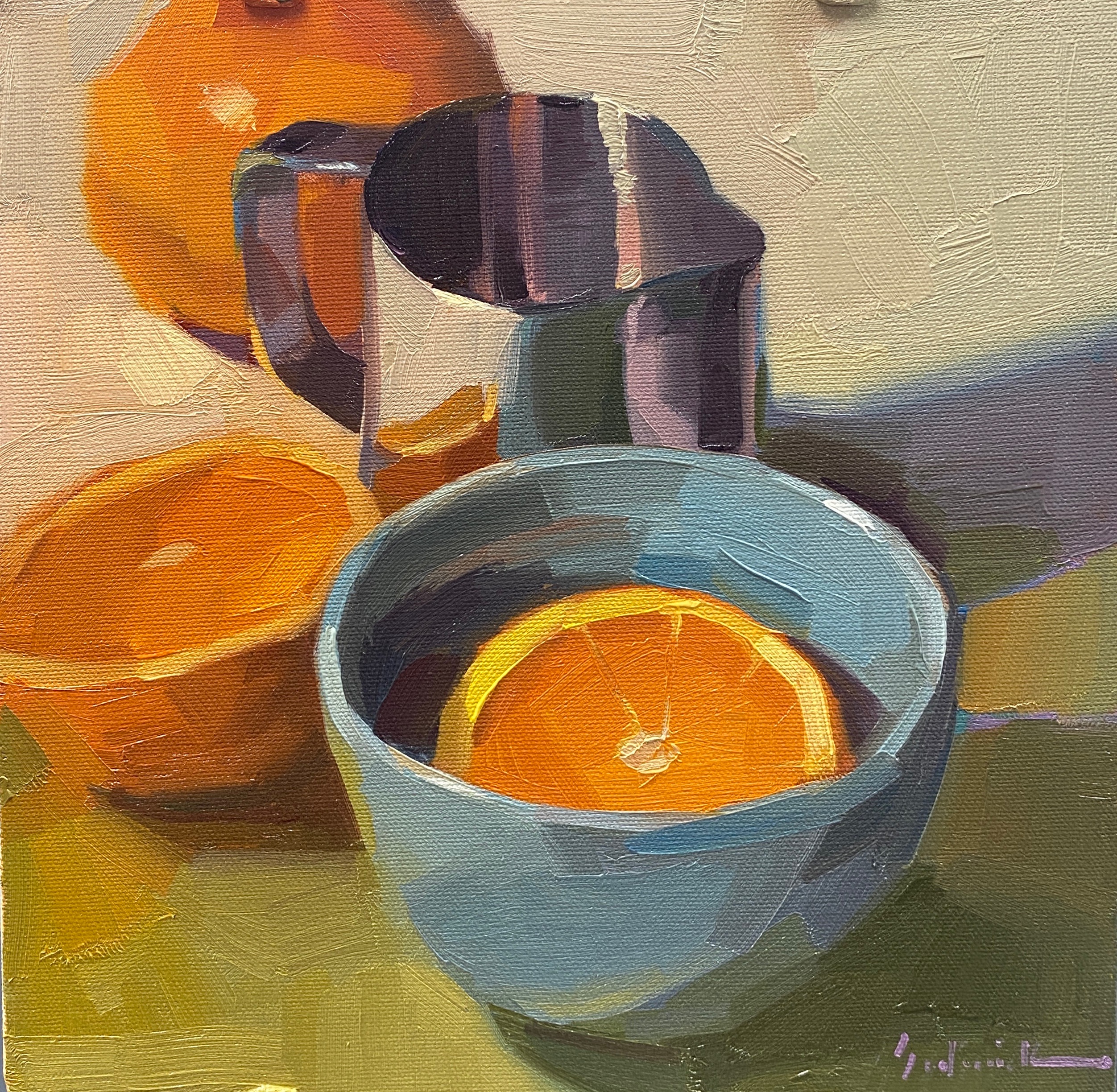Authentic Botanical and Object Oil Paintings for Sale
Authentic Botanical and Object Oil Paintings for Sale
Blog Article
Discovering Everything About Oil Paintings: An Overview to Understanding Their Elegance and Worth
Oil paintings have actually mesmerized audiences for centuries, using a peek into the imaginative proficiency of various ages. Their rich background is linked with cutting-edge methods and extensive emotional expression. Comprehending the materials and approaches behind these art work can boost admiration. In addition, the marketplace for oil paints presents possibilities for collection agencies and investors alike. As one explores this fascinating world, the question occurs: what makes an oil paint genuinely beneficial?
The History of Oil Paint: A Journey Via Time
Oil paint has roots that date back to ancient times, it absolutely thrived during the Renaissance, when artists uncovered its versatility and rich shade possibility. Early examples can be traced to the 7th century, with strategies advancing significantly across cultures. The tool ended up being popular in Northern Europe in the 15th century, especially with the jobs of musicians like Jan van Eyck, that originated its usage for comprehensive realism and vivid tones. This duration noted a departure from tempera paints, enabling better deepness and structure. As oil painting spread, it influenced numerous artists, bring about work of arts by prominent numbers such as Leonardo da Vinci and Rembrandt. The tool's tradition continues, shaping the art world well right into modern times.
Comprehending Oil Repaints: Products and Techniques
As artists check out the globe of oil paints, they run into a diverse variety of materials and methods that define this medium. The key parts of oil paint include pigments, which provide color, and drying oils, such as linseed, that bind the pigments and help with application. Various ingredients can customize the paint's appearance and drying out time, enhancing versatility. Methods like glazing, where transparent layers are built up, and impasto, which involves applying thick paint, permit various aesthetic results. In addition, the usage of brushes, combination knives, and also fingers can create distinct structures and surfaces. Recognizing these products and methods makes it possible for musicians to totally share their imagination and accomplish the preferred impact in their art work.
The Role of Color in Oil Paintings
Color plays a pivotal function in oil paints, influencing both aesthetic appeal and psychological vibration. Understanding shade concept fundamentals, including the partnerships in between shades, can enhance a musician's capacity to convey state of mind and atmosphere. Additionally, understanding shade mixing methods permits for higher deepness and splendor in a painting's combination.

Shade Theory Basics
Recognizing shade concept is crucial for musicians dealing with oil paints, as it develops the foundation for creating aesthetically engaging and harmonious compositions. Color concept encompasses the research study of how shades connect, the color wheel, and the relationships between primary, second, and tertiary shades. Artists use complementary shades to enhance contrasts and develop prime focus, while similar colors advertise unity and cohesiveness within an item. Furthermore, the concepts of warm and awesome shades influence the assumption of depth and room in a painting. Comprehending these principles enables musicians to manipulate color effectively, guiding the customer's eye and connecting their intended message. Proficiency of shade theory eventually enhances a musician's ability to communicate feelings and concepts with their job.
Psychological Impact of Color
The psychological impact of shade in oil paints plays a critical function in just how viewers perceive and attach with art work. Shades stimulate specific feelings and moods, influencing the customer's mood. For circumstances, warm tones like reds and oranges can produce a feeling of heat and power, while awesome tones such as blues and eco-friendlies commonly stimulate calmness or self-questioning. Artists tactically select shade schemes to boost narrative components, leading the target market's psychological journey. The saturation and contrast of colors further amplify these results, attracting focus and producing focus. Inevitably, the interaction of shades in oil paintings not just improves their visual allure yet additionally acts as an effective tool for psychological expression, improving the visitor's experience and analysis.
Color Mixing Techniques
While several elements of oil paint contribute to the total composition, understanding color blending strategies is essential for achieving desired effects and deepness. Shade blending can be approached through various methods, consisting of the additive and subtractive processes. Additive blending involves incorporating shades of light, while subtractive blending depends on pigments, where shades blend to develop new tones. Artists typically utilize a minimal palette to develop harmonious jobs, recognizing the connections in between main, second, and tertiary colors. Techniques such as glazing and scumbling additionally boost deepness and brightness. By skillfully blending shades, a musician can evoke feelings, create prime focus, and achieve a feeling of realism, eventually boosting the painting's emotional and aesthetic effect.
Famous Oil Painters and Their Iconic Works

Famed for their proficiency of shade and strategy, oil painters have actually developed some of the most well known artworks in history. Distinguished artists like Vincent van Gogh mesmerized audiences with his emotive brushwork in "Starry Evening," while Claude Monet's "Perception, Sunrise" prepared for Impressionism. Leonardo da Vinci's "Mona Lisa" continues to be a long-lasting symbol of creative brilliant, showcasing his skill in catching human expression. At the same time, Rembrandt's "The Evening Watch" highlights his cutting-edge usage of light and shadow. Various other significant figures include Pablo Picasso, who revolutionized modern art with his vibrant trial and error in works like "Les Demoiselles d'Avignon," and Georgia O'Keeffe, whose dynamic depictions of flowers and landscapes assisted define American innovation. Each get more info musician's unique style contributed considerably to the oil paint landscape.
Exactly how to Examine the High Quality of an Oil Paint
Examining the top quality of an oil paint includes a mindful analysis of workmanship strategies, along with an evaluation of color and structure. Observing brushwork, layering, and the application of paint can reveal the artist's ability degree. Furthermore, the interaction of colors and the overall setup of aspects contribute substantially to the painting's visual value.
Analyzing Workmanship Techniques
A careful assessment of workmanship techniques is important for determining the high quality of an oil paint. Evaluators need to first check out the application of paint; thick, textured brushstrokes might suggest a knowledgeable hand, while extremely uniform applications could indicate an absence of depth. oil paintings for sale. The layering technique is also vital; the visibility of glazes and varied thickness can improve luminosity and intricacy. Additionally, the top quality of the products used, such as the canvas and pigments, plays a substantial function in resilience and total aesthetic. Attention to information in components like edges and changes between colors shows the artist's commitment to their craft. Inevitably, these methods contribute to the paint's emotional effect and market price, acting as indicators of the artist's skill and intent
Assessing Shade and Make-up
While examining the high quality of an oil paint, one must focus on the interplay of color and structure, as these aspects are essential to the art work's total influence. Shade selections can establish and stimulate feelings state of mind; therefore, the artist's palette ought to be analyzed for harmony and contrast. A well-balanced structure guides the audience's eye and produces a feeling of unity. Musicians typically use techniques like the guideline of thirds or leading lines to improve aesthetic passion. Additionally, the use of light and shadow can include deepness, boosting the three-dimensionality of the painting. Inevitably, an effective oil paint weds shade and make-up, engaging the customer and inviting a deeper recognition of the musician's vision and method.
Caring for and Preserving Oil Paintings
Correct treatment and preservation of oil paintings is essential for keeping their honesty and durability. To safeguard these artworks, it is essential to display them far from straight sunlight, which can create fading and staining. Maintaining a stable setting with controlled temperature level and moisture additional aids in stopping damages. Cleaning up ought to be done carefully using a soft, dry cloth, avoiding any kind of rough chemicals that can hurt the paint or varnish. Routine evaluations for signs of deterioration, such as breaking or flaking, are recommended. When moving or keeping oil paints, correct cushioning and framework are needed to prevent physical injury. Inevitably, persistent treatment adds to the visual allure and value of oil paintings with time.
The Market for Oil Paintings: Accumulating and Investing
Comprehending the marketplace characteristics for oil paintings is essential for enthusiasts and financiers alike. The value of these art work is affected by numerous variables, consisting of the artist's reputation, historic value, and present trends. Enthusiasts frequently look for pieces that reverberate directly while taking into consideration possible recognition in worth. Galleries and auctions work as main locations for trading, with prices varying based on demand and rarity. Spending in oil paintings requires research into the market, in addition to an understanding of credibility and provenance. Furthermore, arising musicians may offer chances for substantial returns, while developed names can regulate high costs. Generally, a critical approach to collecting can yield both visual satisfaction and economic incentives.

Frequently Asked Concerns
What Are the Ecological Influences of Oil Paint Products?
The ecological impacts of oil painting materials include the release of unstable organic substances (VOCs), harmful waste generation, and resource extraction for pigments. These elements contribute to contamination and environmental deterioration, increasing worries amongst ecologically mindful musicians and consumers.
Just How Do Different Canvases Affect Oil Painting Outcomes?
Various canvases affect oil painting results significantly. Surface, absorbency, and appearance quality can change paint application, drying out times, and color vibrancy. Artists typically pick specific canvases to achieve desired impacts and boost their creative expression.
Can Oil Paintings Be Brought Back if Harmed?
Oil paints can certainly be brought back if damaged. Expert conservators utilize different techniques to repair splits, tidy surface areas, and address staining, ensuring that the artwork keeps its original charm and value for future generations.
What Are the Indicators of an Original Oil Paint?
The signs of an initial oil paint include noticeable brush strokes, appearance variants, and an uneven canvas weave (oil paintings for sale). Additionally, credibility might be validated with provenance, trademarks, and the visibility of a varnish layer one-of-a-kind to oil mediums
How Has Technology Influenced Modern Oil Painting Techniques?
Technology has actually greatly influenced contemporary oil painting techniques by presenting digital tools for preparation, enhanced materials for texture and longevity, and online platforms for marketing and sharing art, consequently broadening musicians' creative possibilities and audience get to. Oil paint has roots that date back to old times, it really prospered during the Renaissance, when musicians uncovered its flexibility and abundant shade capacity. The emotional effect of shade in oil paintings plays a critical function in how customers perceive and attach with artwork. While lots of elements of oil painting contribute to the total make-up, understanding color mixing strategies is essential for attaining desired impacts and depth. Examining the high quality of an oil paint entails a careful evaluation of workmanship methods, as well as an analysis of color and structure. While examining the top quality of an oil painting, one should concentrate on the interaction of shade and make-up, as these components are fundamental to the artwork's total effect.
Report this page